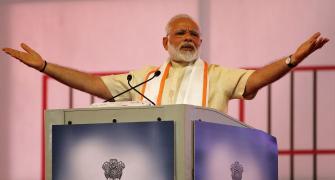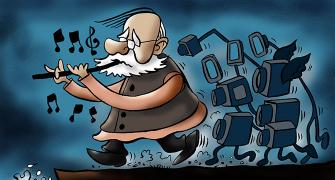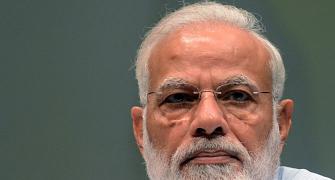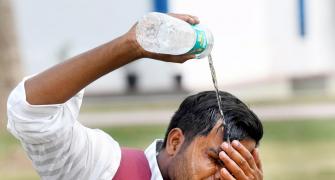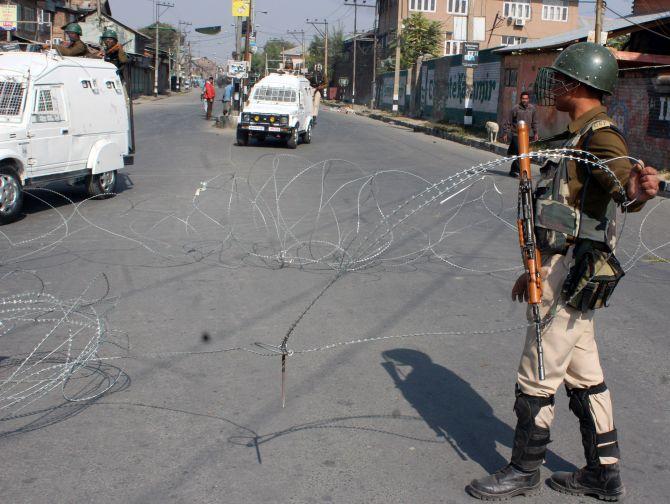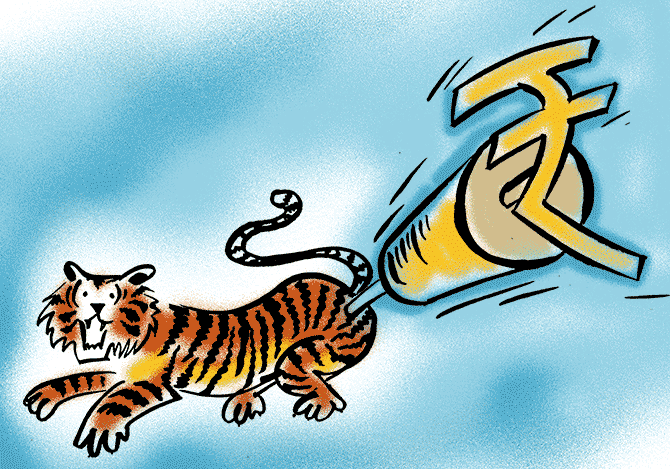A structural shift to meet the demand for affordable health and education of reasonable quality for those earning the minimum wage would increase both economic activity and employment, says Rathin Roy.
Illustration: Uttam Ghosh/Rediff.com
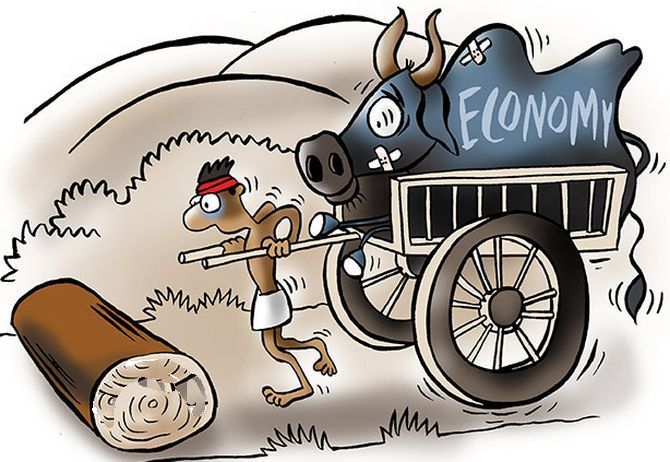
Many economists are now saying what I have been arguing for some time - the present economic slowdown is structural.
It is not caused by a downturn in the business cycle. Therefore, countercyclical policies are not appropriate to address the slowdown.
While this is immediately clarifying for policymakers, a structural slowdown can be variously interpreted depending on one’s analytical framework and understanding of the ground situation.
For some, “structural” means that sectors that have contributed to growth in the past face sector-specific impediments.
Addressing these would involve sector-level policy interventions, for example, addressing questions of credit access or correcting adverse policies.
This is currently the discussion about the automobile sector, for example.
At the macro level, a structural slowdown is typically seen as a supply-side problem.
Institutional or other impediments to investment are identified, and corrective actions are undertaken.
So, economists advocate factor market (such as land and labour market), financial market (credit or capital market) and regulatory reforms to address the situation.
The question of demand deficiency is seen as a cyclical phenomenon.
However, this view has only gathered prominence since the rise to dominance of supply-side economics and has, oddly, persisted even when such dominance has globally withered since 2008.
Explicating the structural demand problem is important to address the contemporary India-specific economic situation (1).
I have previously argued2 that the Indian economy, since 1991, has grown largely by meeting the consumption demands of the top 10 per cent to 15 per cent of the Indian population.
This is reflected in the fact that “leading indicators” of Indian economic growth are largely about what these people consume - automobiles, FMCG, consumer durables, financial services, etc.
Post 1991, there was a shift in relative prices to facilitate this growth.
Here’s a clarifying illustration.
My salary as a young college lecturer in 1988 was Rs 36,000 per annum. The cheapest car cost Rs 1,50,000 (four years’ salary), an air conditioner Rs 20,000 (seven months’ salary), and a Bombay-Delhi air ticket Rs 3,000 (one month’s salary).
Today, the same job earns Rs 7,50,000 per annum.
The same goods can now be purchased with six months’, 10 days’, and one day’s salary, respectively.
This remarkable shift in relative prices fuelled domestic demand.
Private investment responded to this spurt.
This led to a virtuous cycle of growth with the production structure shifting towards capital-intensive goods consumed by the top 15 per cent.
This was buffeted by welfare interventions (like MGNREGS) and a middle-class housing boom, which bolstered construction employment.
Exports and agricultural performance, occasionally, complemented domestic demand.
High growth expanded fiscal space, which was used to provide universal merit goods and subsidised food, reducing poverty.
This model is unlikely to sustain in the medium term but the current slowdown indicates that its limits seem to have impacted the economy sooner.
The demand of the top income deciles is satiating but those earning less (one to three times the minimum wage) are not able to afford the things that the “leading indicators” measure.
Sectors that have hitherto been the engine of growth are now plateauing.
But investment is depressed because it continues to respond to the demand situation in these sectors.
Other sectors are not picking up the slack despite there being latent demand.
This is compounded by poor agricultural performance.
Exports, and increased public investment, are typically proposed to solve a structural demand problem.
But India’s growth story is not export-led.
Exports complement domestic demand but never have been the engine of Indian growth.
If this continues, then the structural problem will not go away.
Public investment is constrained by limited domestic financial savings.
About 65 per cent of the Centre’s fiscal deficit is used to finance consumption expenditure.
Tax buoyancies cannot realistically be expected to increase sharply when there is a growth slowdown.
Faced with a structural demand problem, the cornerstone of growth policy should be to harness the demand at affordable prices of those earning at least the minimum wage.
Rural India is treated as a place where we solve the food problem, with the question of income and demand being relegated to residual status.
In addition, growth in rural incomes (including, but not limited to, doubling of farmers’ income) needs more macroeconomic attention.
Affordable housing is another sector where the private sector could profitably increase economic activity and employment, with demand for homes that those earning the minimum wage can afford being the focus, rather than middle-class homes in suburban conurbations.
We make clothing in India for the rich but we import a lot of clothing for those earning the minimum wage from Bangladesh and Vietnam.
Making the textile sector competitive to reduce net imports from such countries would provide a powerful demand stimulus to growth and employment.
Health and education are also areas in which there is latent demand from a much wider base than 20 years ago.
The rich now increasingly resort to health and education imports and so the business model based on their demand is failing.
A structural shift to meet the demand for affordable health and education of reasonable quality for those earning the minimum wage would increase both economic activity and employment.
The current business model fails to meet this demand.
In my next column, I will discuss macroeconomic policies that can be considered to address the deleterious short-term consequences of the slowdown, but in the medium term, we have to address the structural demand problem if growth is to be inclusive and sustainable.
Supply-side constraints are very real but need to be addressed with the demand constraint in mind.
1 Sukhamoy Chakravarty drew attention to the possibility of a structural demand constraint in 1979 (“On the Question 0f Home Market and Prospects for Indian Growth”, EPW, August; For an analytical exposition see Taylor L and Bacha, E 1976 “ A First Growth Model For Belindia”, Quarterly Journal of Economics)
2 Business Standard: Piketty and the middle income trap (August 9, 2018); A common economic programme for India (May 3, 2019)
Rathin Roy is director, National Institute of Public Finance and Policy. Views are personal


